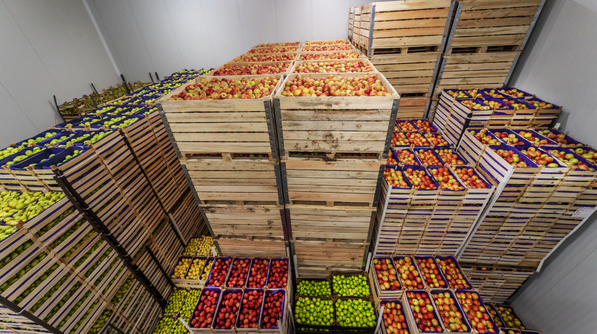Cold storage is a way of preserving raw or perishable foods and meats. It’s vital for businesses, industries, or home use, and they’re classified as fridges and freezers. The goods are kept in rooms with low temperatures to retain their quality and freshness for the longest time.
If you’re out to buy top-of-the-line freezer storage facilities, ensure that they fit your needs and keep goods fresh until they sell. Cold storage prohibits bacteria growth and the spread of diseases from raw materials, prolongs shelf life, and delays the degradation process. Some perishable goods to keep in cold storage are vegetables, food, and fruits. So, are you looking for a cold storage facility for perishable goods? Here’s what you need to know about them.

Types of Cold Storage
Cold storage facilities are in two categories;
- Frozen storage facilities (sub-zero storage) – Perishables stored at 1 to -50 °C are meant to remain fresh in store for long periods.
- Chilled or refrigerator storage – Goods are stored at a temperature range of 0-5 °C. It’s suitable for meats, seafood, and dairy.
Depending on the products you’re distributing, some cold storage warehouses also offer distribution services using their chilled vehicles. This way, chilled or frozen goods reach customers in the best state.
Who Needs Cold Storage?
Chilling or freezing sensitive products helps maintain their physical and chemical changes while preserving their purity and preventing biological decay. The primary goal of cold storage is to keep perishable goods fresh and to ensure they reach the end user in the best quality possible. Here are particular products that need cold storage.
- Fresh Foods such as fresh produce, dairy, meat, seafood, processed foods, and frozen foods
- Perishable nutritional supplements
- Botanical plants like flowers.
- Biopharmaceuticals include vaccines, medicines, blood samples, dental materials, and IVs.
- Historical books, film canisters, and artwork
- Craft goods like candles
- Cosmetics that can melt, like lipstick or cologne
- Chemicals like reagents and disinfectants
- Organic textiles like fur, hides, and wool.
- Special aircraft components
The Main Components of a Cold Storage
Although a fridge and freezer operate differently, the primary objective is to retain a desired temperature for safety while using the products. Here are the significant components of cold storage;
- Compressor
- Air-cooled condenser
- Ceiling unit cooler
- Cold air wind curtain
- Electronic control box
- Cold storage door
Things to Consider When Building Cold Storage
To build a cold storage that meets your needs, you must factor in the following;
Space and size of the storage
When building cold storage, ensure the size matches the type of raw materials. Before creating cold storage, provide sufficient space for the installation and loading of products. The room and raw materials should be compatible for easy access to delivery trucks.
Temperature Needed for the Raw Material
Raw materials in cold storage should be organized in a particular location to aid easy access and transfer. Moreover, the quantity of products in a cold store also influences room temperature. When the time comes to store more significant products, the cold storage should be able to accommodate whatever size.
Proper Ventilation
Storing raw materials in cold storage for a long time and moving them in and out can cause an unpleasant smell from unknown substances. So, storage should have proper ventilation to circulate fresh air. Sufficient ventilation in a cold storage system will help maintain recommended temperatures for different products to help retain quality.
Electricity
Cold storage is run by electricity power 380v or 3 phases connection. The electricity supply should be in constant supply without short circuits or blackouts. It’s necessary to have a power backup in case there’s a power outage to ensure the perishables remain in the best quality.
Maintenance
Cold storage needs regular maintenance at least once a month. This way, you can analyze if the cold storage capability is functioning as it’s supposed to and repair anything that could be broken or malfunctioning. A qualified or professional engineer should perform maintenance to avoid further destruction.
Suppose you’re to purchase cold storage for business. It should function maximally to preserve small and massive products. Nevertheless, maintenance must be performed to ensure the correct temperatures in the cold storage to prevent decay.
Advantages of cold storage
Cold storage preserves and maintains perishable goods in the best shape until sold. Moreover, food products should be frozen immediately after harvest. Here are the main advantages of cold storage.
- Save kitchen time
- Retain nutritional value
- Keep a wide range of frozen products
Disadvantages
- Frozen food tastes different
- Improvising with frozen foods is almost impossible
- Frozen foods are costly
- Not all products are ideal for cold storage
Advantages of freezing
- Food is safe and clean, as low temperatures kill most microorganisms that can hasten the degradation of products.
- Products remain fresh
- Maintaining nutritional value
- Anything can be frozen
- It is economical because it saves money and time by not shopping all the time.




